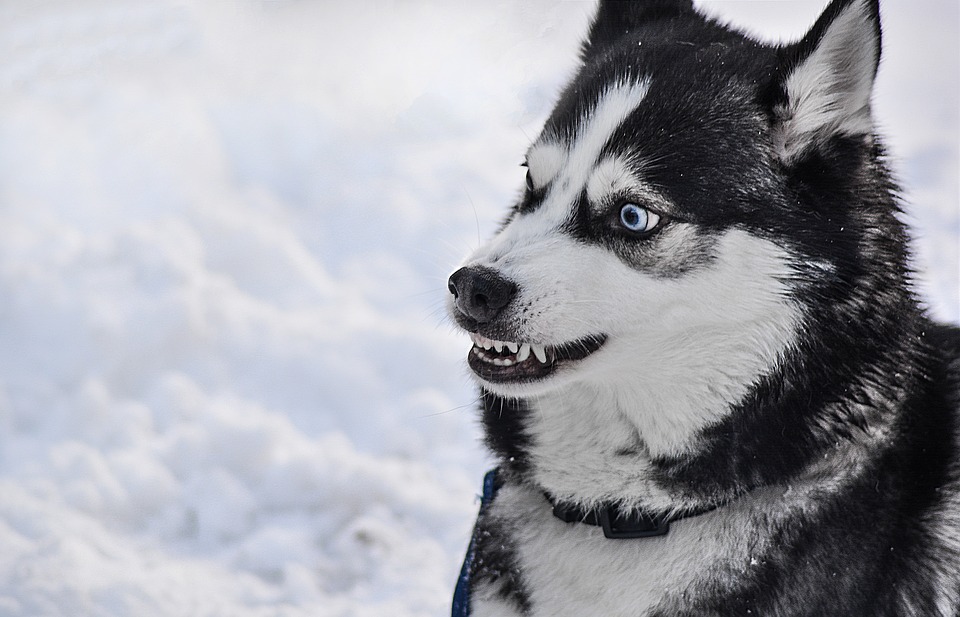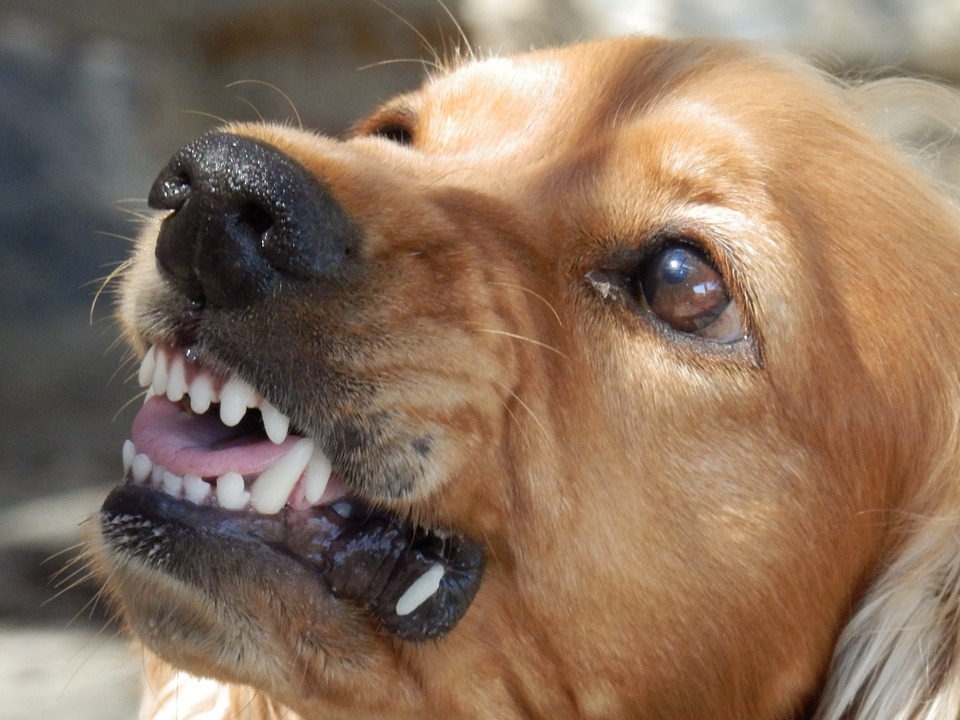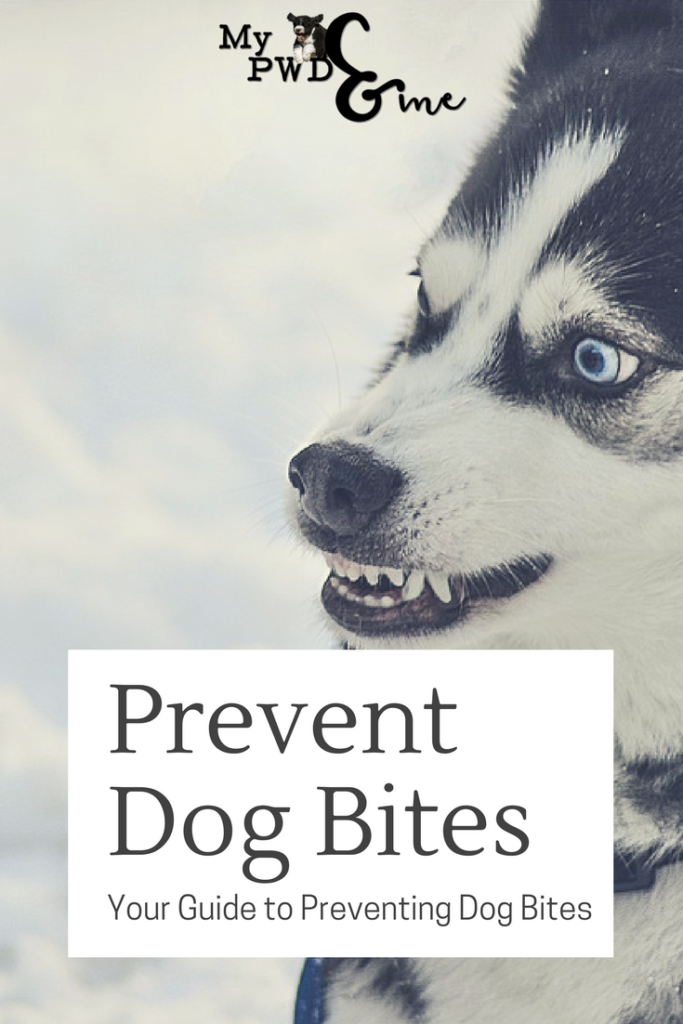Any dog can bite. Any dog may bite. How do you prevent dog bites? To understand the how it is important to understand the why.
Most dogs, not all, do not bite without warning. At some point they have given a cue in their native language that we, as humans, missed.
What Dog Cues Prevent Dog Bites?
Every dog is different so understanding dog language is important. You must look at the whole dog and situation before making a determination. What may look like play really may be a warning. And what looks like aggression may really be submissiveness.
Many dogs bite out of fear or frustration. And there are quite a few indicators that dogs give when they are fearful. Here are some of the more common signs that when put together may indicate an impending dog bite.
The eyes are a great tell ~ extended staring, constricted pupils, eyes darting back and forth, and showing the whites of the eyes. In the case of a Border Collie extended, intense staring is part of the breed and you would need more clues to know if they were leaning towards biting.
You can also tell from the ears ~ perked forward or pinned back. In the case of a Pumi their ears always perked forward so it would not be a good tell for them.

The tail is another indicator ~ raised high, wagging in stiff short wags, lowered, or tucked. In the case of the Portuguese Water Dog their tail is raised and curled and generally moves in stiff or short wags.
You can also tell from body movements ~ they are hiding or trying to hide, yawning, licking their lips, are frozen, shaking, pacing, trying to escape, looking away, refusing treats or toys, and even trying to get closer to “safe” humans.
What the dog is doing with their mouth is one of the best indicators ~ a closed, tense mouth generally happens before the dog reacts, winkling the nose and pulling the lips back to show the front teeth can mean a bite is more likely.

Other aggressive signs include barking, growling, and snapping. These all may happen before a bite. It is important to understand that most dogs will give warning signs before the bite. Everything here is a warning sign and is not to be ignored.
How do I prevent a dog bite?
Know your dog. Know their limitations, their likes and dislikes.
If you don’t know the dog, don’t approach until you have permission from the owner. Teach your children and others to always ask before petting or even getting close to a dog. While the owner may be able to manage the situation, it is unfair to put them at a disadvantage.
Even if you know the dog make sure you know their relaxed state. It is easier for you to understand when there are stressors. If you can’t tell error on the side of caution and don’t approach.
Provide your dog with training so they can cope in stressful situations. There are techniques such as TTouch that can be helpful in reducing stress in your dog. Coping mechanisms are only effective if the dog fully understands them prior to introduction of the stressor.
If your dog doesn’t like children don’t put him in a situation where he is with a child. Now that sounds so much easier than it may be.
Sometimes you need to be in a situation where your dog might be fearful or uncomfortable. In that case you will need to manage your dog and the situation.
Situation Management Techniques
If you have your dog crate trained keeping a travel crate in your vehicle or bringing it with you can be of great value. If you haven’t crate trained your dog check out my post here.
This is one of my favorite crates. It is collapsible and light weigh. Yet sturdy enough that your dog isn’t rolling around or able to get through it easily.
If you have a dog that is an aggressive chewer or an escape artist you will want to consider a wire crate. While these are heavier and generally a bit bulkier. However, they do collapse well and are a safe option for your dog.
Another thing I suggest is keeping your dog on a short leash. Miss Millie walks on a four-foot leash. I have better control if she gets into a situation where she is stressed.
I dislike retractable leashes and can cause more problems than they solve. If you use one it is imperative to know what your dog may react to so that you can reel them in before it happens. And if you can’t see it coming you don’t know to help protect your dog. Remember, just because your dog is friendly in a situation doesn’t mean the other dog is comfortable.
Resource guarding is one of the more common dog bites. Avoid feeding your dog around people or other dogs if they are protective of their food. You can feed them by hand, if you feel comfortable. Or feed them in their crate or an area where they are isolated.
Managing your dog and the situation is your responsibility. We all get caught in less than ideal circumstances but knowing our dog is vital in preventing dog bites.
Come follow us on social media to see what we are doing next. Like what you are reading? Don’t forget to sign up for our newsletter.
Disclosure: Please note that some of the links above are affiliate links. In fact, just go ahead and assume that anywhere you see a link, that it’s an affiliate link. There is no additional cost if you decide to make a purchase; We will simply earn a small commission. We will never refer a product or service that we don’t use or have experience with. But don’t take our word for it – do your own research on any products or services to be sure they’ll be a fit for you. If you have questions on any of these, please ask!


